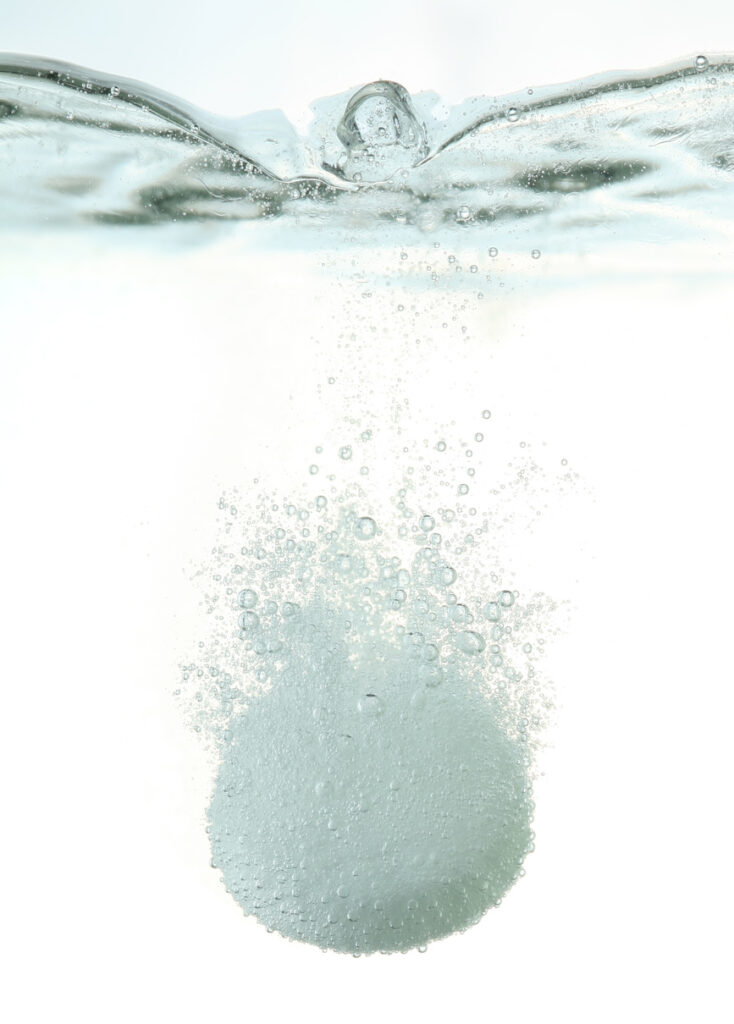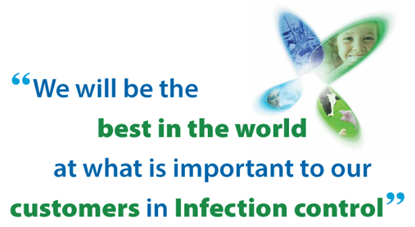Transitioning from sodium hypochlorite to NaDCC (sodium dichloroisocyanurate) as a primary disinfectant in a healthcare facility (HCF) involves a systematic process to ensure safety, compliance, and effectiveness. Both are powerful disinfectants, but NaDCC has certain advantages, such as a longer shelf life, better stability, and efficacy in the presence of organic matter, among others.
Four Reasons for NaDCC:
- Storage and Transport Benefits: NaDCC tablets are significantly lighter and occupy less space than traditional liquid chlorine, reducing storage and transportation costs.
- Extended Shelf Life: Unlike liquid chlorine, NaDCC tablets are stable with a longer shelf life, minimizing waste.
- Environmental Impact: With a lower carbon footprint in production and transportation, Kersia NaDCC tablets support our goal of a more sustainable operation.
- Enhanced Efficiency: NaDCC tablets are designed to achieve precise dosing, crucial in ensuring effective disinfection.
Here’s how to make the transition:
Understanding the Reasons for Transition:
Begin by understanding why you’re making the transition. NaDCC has several benefits over bleach, including less corrosion, better stability, improved safety profile, and effectiveness against a broad range of microorganisms.
Recognize any institutional resistance to change and prepare to address concerns through education and demonstration of NaDCC’s benefits with the help of our Kersia infection prevention experts.
health

Regulatory Compliance and Recommendations:
Check with your local and national health regulatory body to ensure NaDCC is an approved substance for disinfection purposes in your healthcare setting.
Understand the guidelines provided by health authorities concerning the concentration, contact time, and safety precautions for NaDCC usage.
Staff Training and Education:
Arrange comprehensive training programs for your staff. These should include the reasons for the switch, the differences between bleach and NaDCC, and the proper preparation, handling, and disposal methods for NaDCC.
Highlight the correct dilution rates per tablet size; our tablets must be dissolved in water and are designed for specific concentration volumes.
Safety Protocols:
Establish safety protocols for handling and storing NaDCC, which will differ from those of bleach. Your team will notice the benefits of using NaDCC tablets straight away! They are easier to store and can be used with microfibre cloths, spray bottles, wipes and mechanical sprayers.
Create or update safety data sheets (SDS) to reflect the use of NaDCC and ensure they are readily accessible.

Disposal and Environmental Considerations:
Familiarize yourself with and adhere to local regulations on the disposal of NaDCC solutions, as requirements may differ from those for sodium hypochlorite.
Consider the environmental impact of your disinfectant and its by-products, understanding that NaDCC is typically more environmentally friendly compared to bleach.
Implementation and Monitoring:
Start with a phased approach, introducing NaDCC in one department or unit before a full-scale rollout.
Monitor and document the effectiveness of NaDCC as a disinfectant in your facility, including any impact on infection rates.

Feedback and Continuous Improvement:
Encourage staff feedback on the transition process and the use of NaDCC in everyday practice.
Continuously assess and respond to this feedback, making any necessary adjustments to protocols, concentrations, or usage guidelines.
Public Relations and Patient Communication:
Inform patients of the change in disinfection protocols, emphasizing the benefits and reassurance regarding safety and efficacy.
Prepare public relations materials, if needed, to communicate the reasons for the change and the benefits it brings to patient care and safety.
Review and Audit:
Regularly review the process, ensuring compliance with health and safety standards.
Conduct regular audits to ensure the proper use and management of NaDCC, including adherence to dilution, application, and disposal procedures.
Remember, your healthcare facility is unique, so it’s crucial to tailor the transition plan to meet the specific needs, concerns, and existing protocols of your institution. Always adhere to the highest standard of care, safety, and regulatory compliance.
Contact our Kersia Healthcare experts if you need additional help:


